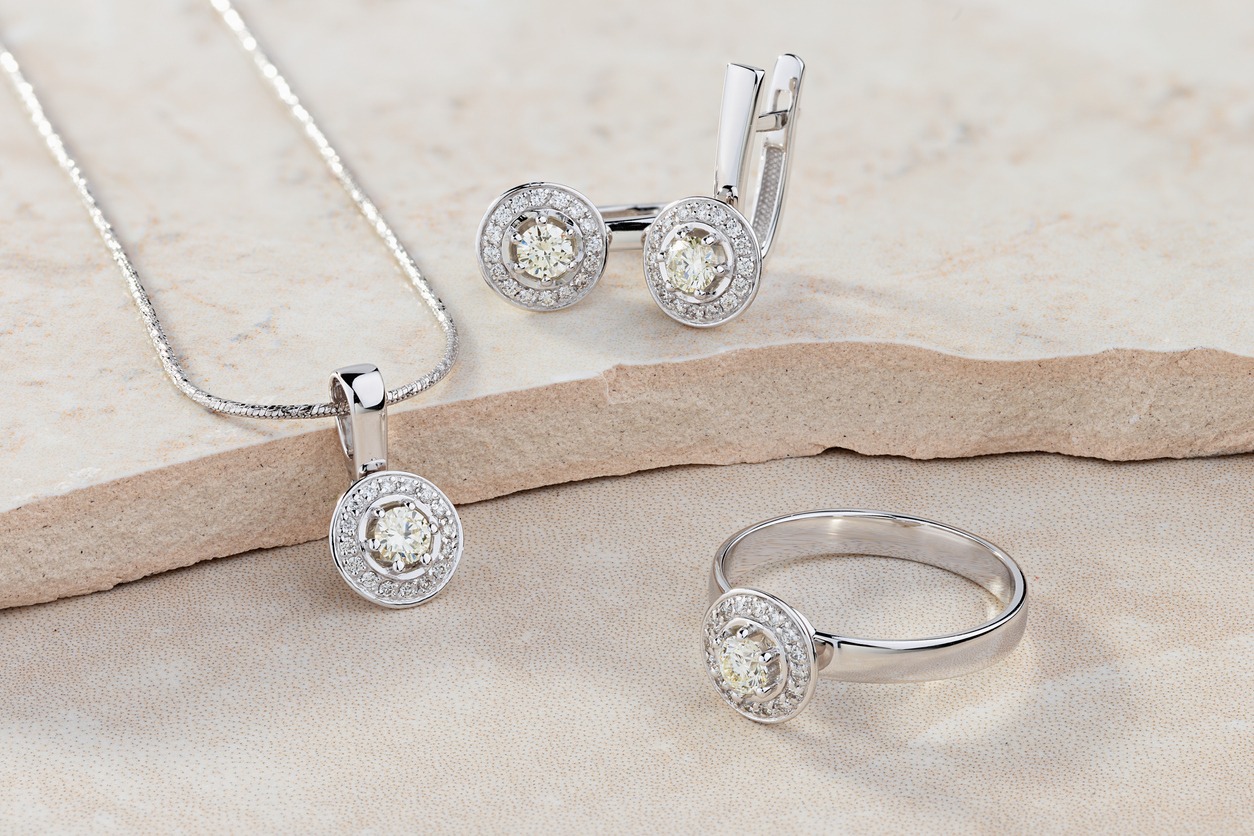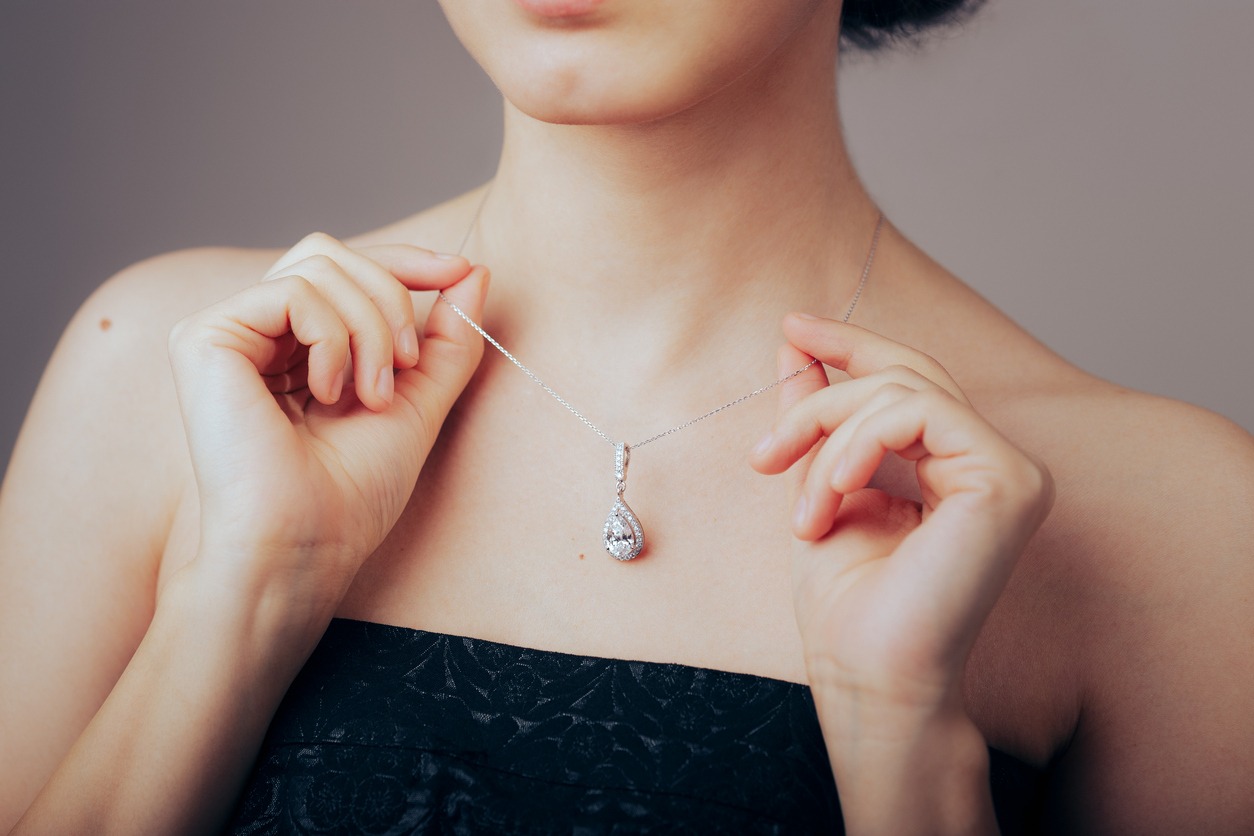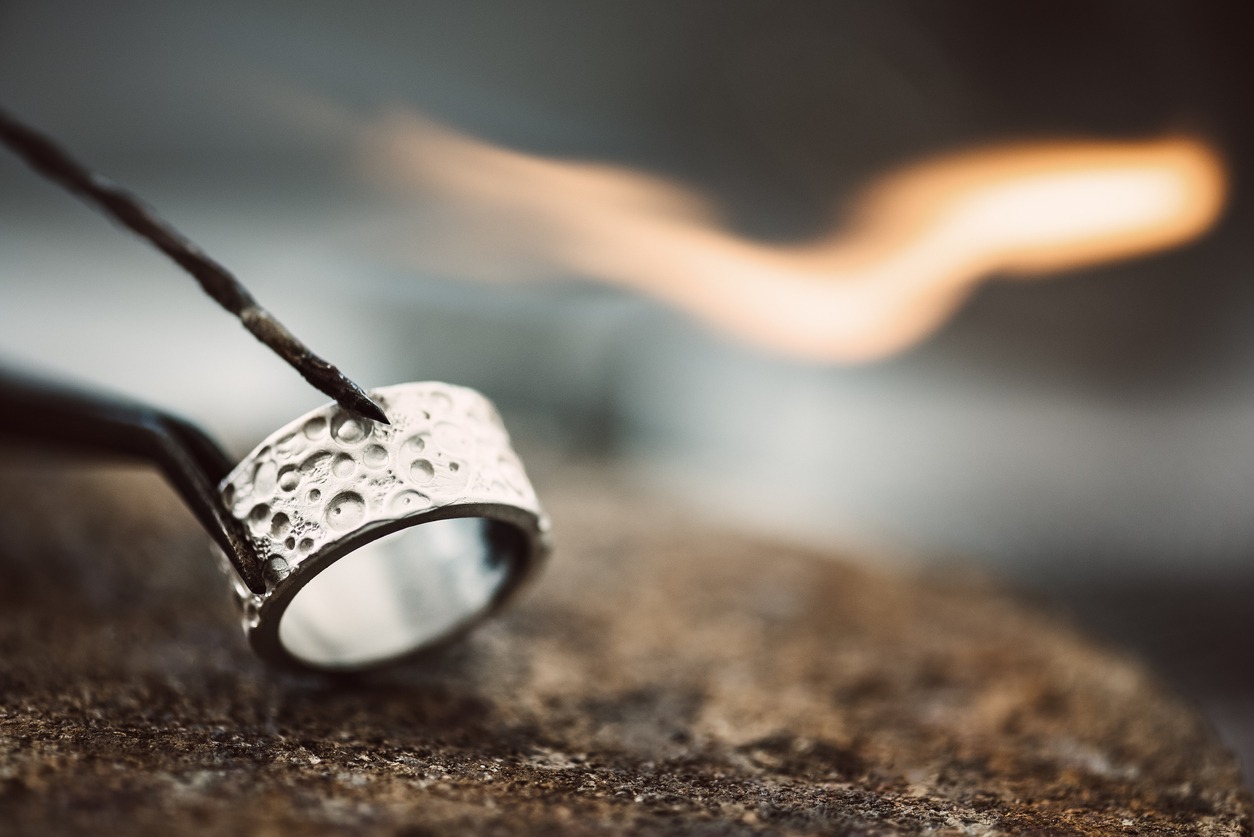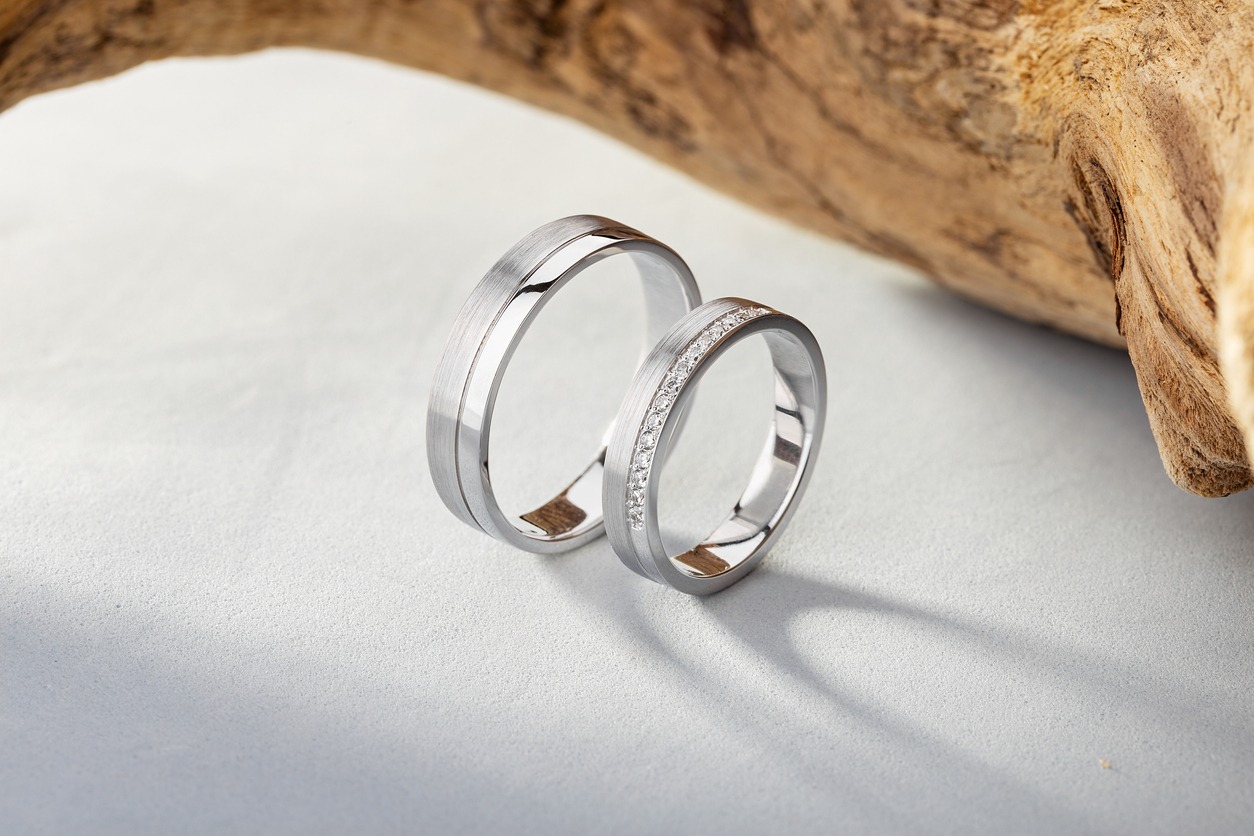With the proper maintenance, silver jewelry is a timeless, valuable, and timeless accessory. Although there are several different types of silver, they are all used in a wide range of objects around us, including jewelry and numerous antiques. The type of silver jewelry you select will have a big impact on its quality, value, and care.
Understanding the other alloys will help you appreciate the worth and appeal of jewelry and antiques, so learning about them is a good idea. People need to be familiar with the following ideas to comprehend the various kinds of silver:
Silver Alloys
A combination of two or more elements is referred to as an alloy. The fact that silver is malleable, i.e., easily bendable, as a physical property, is significant. As a result, silver by itself cannot produce very durable jewelry. As a result, the majority of the silver used in jewelry is an alloy of silver and other similar metallic elements from the periodic table.
Quality Marks or Stamps
The quickest and easiest ways to determine what kind or grade of silver is used in the jewelry are quality marks or stamps. The stamp of quality must be present for the jewelry to comply with legal requirements. Some jewelry items, however, cannot be marked with this stamp due to the delicate nature of the design or size. In these situations, it’s crucial to obtain a receipt that specifies the kind of silver your jewelry is made of.
Grades of Silver
1. Fine Silver
The purest form of silver available for purchase is this. Fine silver contains 99.9% pure silver and is hypoallergenic. Copper is typically found in the 0.1% remaining trace element composition. The metal cannot be referred to as fine silver if these trace elements have an excess of 0.1%. Even though all forms of silver eventually tarnish, fine silver has a high purity that makes it much more resistant to tarnishing than forms of silver with a lower-quality stamp. Fine silver jewelry is much less widely available on the market than silver jewelry of sterling quality. Fine silver is not the best kind of silver to use for making jewelry because it is soft, more expensive than sterling, and prone to scratches and dents.
However, some individuals do favor the brilliant, silvery-white hue of fine silver jewelry. Lower-purity alloys are grayer in color and reflect less light, but they are harder and more resilient. For lovers of fine silver, earrings are probably the best type of jewelry item. As a result of their greater wear and tear than earrings, other types like rings, bracelets, and necklace chains are more prone to damage when made of a soft metal like fine silver.
Common Fine Silver Quality Stamp Marks:
- 999 (meaning 999/1000 parts, or 99.9% silver)
2. Sterling Silver
The type of silver most frequently used in jewelry is by far sterling silver. This silver quality grade has a long history and has been used for making ornamental items and minting coins for about a thousand years. Sterling, which is typically made up of 92.5% silver and 7.5% copper, is more durable and less expensive than silver metals that are purer. Sterling silver is lustrous and attractive, though its color is not as vivid as that of fine silver. However, due to its higher copper content, this alloy is more likely to tarnish over time. Your sterling silver can avoid developing surface tarnish by being routinely polished with a soft cloth and kept dry.
Sterling is regarded as a hypoallergenic metal, much like fine silver. The amount of copper in sterling silver is quite low, even though a small proportion of people have mild copper sensitivity. This indicates that it can be worn by the majority of people, if not all.
Common Sterling Silver Quality Stamp Marks:
- Sterling, Ster, STG, or SS
- .925 (meaning 925/1000 parts, or 92.5% silver)
- The Lion Passant (a heraldic lion used as a symbol for sterling silver)
3. Non-Tarnish Silver
Non-tarnish silver is a relatively new material to the jewelry industry; it was first created in the 1990s. Because they replace some of the copper in their remaining composition with other metals, these sterling-quality alloys with a minimum silver content of 92.5% do not easily tarnish. These new silver alloys frequently contain germanium because this metal absorbs and neutralizes atmospheric chemicals that cause silver to tarnish over time. A truly tarnish-proof silver alloy hasn’t been created, even though they’re frequently marketed as such. Therefore, it would be more accurate to refer to the current non-tarnish alloys as tarnish-resistant. While non-tarnish alloys are slightly more expensive than sterling silver, they also require much less maintenance and polishing.
These modern non-tarnish alloys are:
- Argentium – 93.5% or 96% silver, with the remaining material being a mix of germanium, zinc, boron, and copper. The most well-known non-tarnish silver on the market is called Argentium.
- Silvadium – which is made up of 93% silver, 7% palladium, and traces of germanium.
- Sterlium – is made up of 93% silver, 4% zinc, 3% copper, and traces of germanium.
- Sterilite – contains 92.5% silver, with the remainder being silica, copper, tin, zinc, and occasionally germanium.
Common Non-Tarnish Silver Quality Stamp Marks:
In addition to the typical sterling silver marks, non-tarnish alloy jewelry can have the following characteristics:
- Argentium, Silvadium, Sterlium, or Sterilite
- A winged unicorn (official trademark of the patented Argentium silver alloy)
4. Britannia Silver
At least 95.83% of Britannia silver is pure silver. Copper is frequently used as the base metal that makes up the remaining portion of the alloy. In England, silver-wrought goods were required to bear the Britannia silver stamp by law in the 17th century. With their lower silver content, sterling silver coins were less likely to be melted down and used to make silverware, which was the goal of the new law. However, Britannia was unpopular with many people because its products were softer and less durable than those made of sterling silver, and the law was ultimately repealed. Some contemporary jewelers still sell items made of Britannia silver, especially in the UK market. However, it’s uncommon to find this kind of silver for sale in the US.
Common Britannia Silver Quality Stamp Marks:
- Britannia
- .958 (meaning 958/1000 parts, or 95.8% silver)
- A figure of Britannia (a traditional goddess personification of Britain used as a quality stamp)
5. Coin Silver
Coin silver historically derived both its composition and name from US silver coins, consisting of 90% silver and 10% copper. These coins would be melted down by silversmiths for use in jewelry and other products. Standard silver or the colloquial term “one nine fine” were other names for this tough silver coin alloy. Coin silver contains 10% copper, which makes it harder than sterling silver but also duller and more tarnish-prone.
Over time, real silver was no longer used to make the majority of US coins. When there was no supply of silver coins, coin silver jewelry vanished from the market. Since then, sterling silver has largely taken the place of coin silver. However, coin silver jewelry is still used in some older or antique pieces. Their age and rarity often have a greater impact on their value than the amount of silver they contain.
Common Coin Silver Quality Stamp Marks:
- Coin or Pure Coin
- Standard
- .900 (meaning 900/1000 parts, or 90% silver)
6. European Silver
Continental silver, also referred to as European silver, does not conform to a single silver quality standard like fine, sterling, or Britannia-grade silver. Instead, these terms refer to the numerous types of silver used in continental Europe to create jewelry. The names were historically used to distinguish these continental alloys from those that were more frequently used in jewelry in Britain and the US.
European silver alloys can range greatly in terms of purity, color, and durability. While some contain more silver, many do not have enough to qualify for the sterling-quality stamp. Dutch silver (83.5% or 80% silver) and French silver (95% or 80% silver) are two examples. Since sterling silver has emerged as the most popular alloy for silver jewelry, these types of silver are less prevalent on the market today. However, jewelers in some European nations still create items by their customary standards for silver quality.
7. Silver Filled
A relatively thick layer of silver is mechanically bonded to an underlying base metal, typically brass, to produce silver-filled metal. This results in a layered metal that is only silver on the outside rather than an alloy.
Silver, typically sterling-quality silver, makes up between 5% and 10% of the layered metal used to create silver-filled jewelry. This is in line with the 5% to 10% gold alloy by weight precious metal percentage composition of gold-filled jewelry.
Although it might not seem like much, silver-filled is the best and thickest kind of silver surface coating that is currently available. The outer coating of layered metal products can take many years to wear off and reveal the base metal with proper maintenance.
Common Silver-Filled Quality Stamp Marks:
- Silver-Filled or SF
- 1/20 (meaning 1/20 parts, or 5% silver)
- 1/10 (meaning 1/10 parts, or 10% silver)
8. Silver-Plated
Jewelry that has been silver-plated is made by dipping items made of base metals into a solution of liquid silver plating, which coats the objects with a microscopic layer of silver. Silver-plated jewelry is not designed to withstand frequent wear because this plating is so thin. This cheap silver plating quickly rubs off, exposing the underlying metal, which tarnishes and causes further discoloration.
The silver plating is very affordable compared to other silver jewelry metals, which is a plus. They’re a good option for experimenting with new trends and styles because they will still look authentic for the first few wears.
Common Silver Plated Quality Stamp Marks:
- Silverplate, Silver Plated, or SP
- Quadruple Plate (meaning 4x thin layers of silver)
- EP (Electroplated) or EPNS (Electroplated Nickel Silver)
9. Tibetan Silver
The so-called “Tibetan silver” is neither silver nor from Tibet, despite its name. The phrase describes inexpensive costume jewelry that is crafted from different types of silver-colored alloys. These metal alloys, which are primarily produced in China, are intentionally dull rather than shiny to give them a vintage silver appearance.
Intricate detailing can be found on many Tibetan silver objects. Common themes include spiritual symbols, mythical animals, and eastern scripts and patterns. To draw attention to these particulars, a black finish may occasionally be used; this gives the metal an aged, oxidized appearance.
Nickel, copper, tin, and zinc are the most widely used base metals in jewelry sold as Tibetan silver. However, some of these products have also been found to contain toxic metals like lead, arsenic, and cadmium.
The majority of jewelry made with dangerous metals is created in nations where consumer safety laws are not strictly enforced. Selecting a supplier from the US, UK, Australia, or another nation with strict consumer protection laws is safer.
10. Tribal Silver
In the jewelry industry, the terms tribal silver and Tibetan silver are frequently used interchangeably. Both are devoid of silver and may contain lead or other hazardous metals. Be cautious when buying Tibetan or tribal silver jewelry produced in nations with lax consumer safety regulations.
Practically, the way these two metal alloys are marketed is the only distinction between them. If a piece of jewelry satisfies nebulous consumer perceptions of what “tribal” or “Tibetan” jewelry ought to look like, it may be referred to as either.
Tribal silver, for instance, is a term used to describe items with patterns and motifs from Native American or African cultures. Likewise, jewelry with Buddhist and Eastern patterns and symbols is more likely to be marketed as Tibetan silver.
11. Nickel Silver
German and Alpaca silver are other names for nickel silver. The alloy is known by these and a few other names, but it contains no silver. The typical composition of nickel silver is roughly 60% copper, 20% zinc, and 20% nickel. Some people avoid this metal alloy because of its high nickel content. Nickel allergies affect 3% of men and 17% of women, respectively. claiming that most wearers of nickel silver will be able to do so without any problems.
The benefits of nickel silver over other alloys, which may be too brittle or too soft, include its affordability, durability, and ease of shaping into jewelry pieces. Because of these factors, nickel silver is frequently used in costume and fashion-quality jewelry, either as finished goods or in combination with a thin layer of actual silver.
Conclusion
The silver quality used in various items is determined by a variety of widely used tests. You can submit your valuables to X-ray testing, a non-destructive method of determining the metal’s quality. This type of testing is regarded as being incredibly accurate. Another method is through wet chemical testing or analysis, which is regarded as a destructive test because it removes a piece of your jewelry for testing. It is crucial to understand the grade or quality of silver used in jewelry or other silver items, regardless of the price you pay. It is important that you understand the different types or grades of silver for this.






